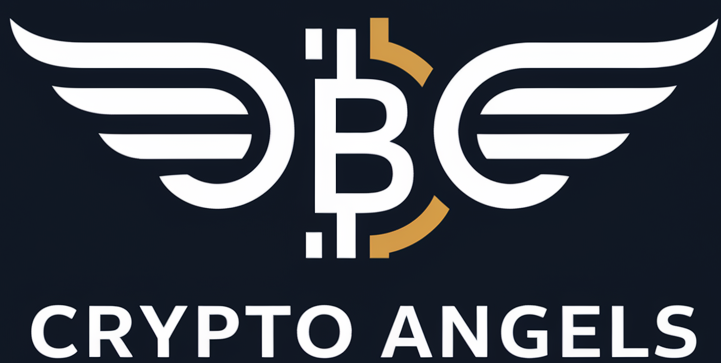What is Litecoin Halving?
Litecoin halving is a recurring event in the Litecoin protocol where the block reward for miners is reduced by half. This event occurs approximately every four years and is designed to control inflation and limit the total supply of Litecoins to 84,000,000. The process is similar to Bitcoin halving, which aims to incentivize miners to keep the network running while maintaining the value of the cryptocurrency.
Litecoin, created by Charlie Lee in October 2011, is often referred to as the “silver to Bitcoin’s gold” due to its faster block generation time and lower resource-intensive algorithm (Scrypt) compared to Bitcoin. The Litecoin halving mechanism is an essential aspect of the cryptocurrency’s protocol, ensuring scarcity and maintaining its value over time.
How Litecoin Halving Works
During a Litecoin halving event, the block reward for miners is reduced by 50%. This means that miners receive half the amount of Litecoins they previously earned for each block they mine. The reduced block rewards limit the rate at which new Litecoins are created, effectively controlling inflation and increasing scarcity.
As the block rewards decrease, mining profitability is affected, which can lead to fluctuations in the network’s hashrate. Miners may need to adjust their strategies or upgrade their equipment to remain profitable, especially as the mining difficulty increases over time.
Similarities Between Litecoin and Bitcoin Halving
Litecoin and Bitcoin share many similarities, including their halving mechanisms. Both cryptocurrencies have a limited supply, with Bitcoin capped at 21 million coins and Litecoin at 84 million coins. The halving events in both networks occur at regular intervals, approximately every four years, to control inflation and maintain value.
However, there are some differences between the two cryptocurrencies. Bitcoin has a more significant market size and impact compared to Litecoin, and the two networks use different algorithms for mining. Bitcoin uses the SHA-256 algorithm, while Litecoin employs the Scrypt algorithm, which allows for faster transaction times (2.5 minutes per block) and reduced computational power requirements.
Litecoin Halving Schedule and Dates
Litecoin halving events occur at predetermined block heights, with the first halving taking place in August 2015 and the most recent one in August 2023. The next Litecoin halving is projected for July 2027, further reducing the block reward for miners. Understanding the Litecoin halving schedule is crucial for miners, investors, and enthusiasts to make informed decisions and anticipate potential market changes.
First Litecoin Halving (2015)
The first Litecoin halving occurred on August 25, 2015, at block 840,000. The block reward for miners was reduced from 50 LTC to 25 LTC. At the start of the halving, the price of Litecoin was around $3.05, and 100 days later, it reached $3.35. One year after the halving, the price of Litecoin had increased to $3.85.
Second Litecoin Halving (2019)
The second Litecoin halving took place on August 5, 2019, at block 1,680,000. The block reward was further reduced from 25 LTC to 12.5 LTC. The price of Litecoin at the start of the halving was $93.03, and it experienced some fluctuations in the following months. 100 days after the halving, the price had decreased to $61.50, and one year later, it was trading at $57.63.
Third Litecoin Halving (2023)
The most recent Litecoin halving occurred on August 2, 2023, at block 2,520,000. The block reward for miners was reduced from 12.5 LTC to 6.25 LTC. The halving event has generated significant interest in the cryptocurrency community, with discussions about its potential impact on Litecoin’s price and market sentiment. Some predictions suggest that Litecoin’s price could reach around $70 by December 2023.
Future Litecoin Halvings (2027 and Beyond)
The next Litecoin halving is expected to occur in July 2027, reducing the block reward from 6.25 LTC to 3.125 LTC. As the mining rewards continue to decrease, the profitability of mining Litecoin will be affected, potentially leading to changes in the network’s hashrate and security.
The final Litecoin halving is projected to take place in 2143, at block height 27,720,000. At this point, the block reward will be reduced to an extremely small amount, approximately 0.00000000582 LTC. After this halving, miners will primarily rely on transaction fees to secure the network through Proof-of-Work operations.
Impact of Litecoin Halving on Price and Market
Litecoin halving events have historically led to price fluctuations and changes in market sentiment. Investors and traders closely monitor the cryptocurrency’s price history and market trends during halving periods to make informed decisions and optimize their profits. Understanding the impact of halving on supply and demand dynamics is crucial for navigating the Litecoin market.
Historical Price Trends During Litecoin Halvings
Litecoin has shown a tendency to rally in the weeks or months leading up to a halving event, as investors anticipate a potential price increase due to the reduced supply of new coins. However, after the halving occurs, Litecoin often enters a bearish period, with prices consolidating or declining.
| Halving Event | Pre-Halving Price | Post-Halving Price (100 Days) | Post-Halving Price (1 Year) |
|---|---|---|---|
| 2015 Halving | $3.05 | $3.35 | $3.85 |
| 2019 Halving | $93.03 | $61.50 | $57.63 |
Factors Influencing Litecoin’s Price During Halving
Several factors can influence Litecoin’s price during a halving event, including market sentiment, investor speculation, and mining profitability. As the block reward decreases, some miners may find it less profitable to continue mining Litecoin, leading to a potential decrease in the network’s hashrate. This, in turn, can affect the security of the network and the confidence of investors.
Additionally, the overall market sentiment towards cryptocurrencies and the performance of other major coins, such as Bitcoin, can have a significant impact on Litecoin’s price during halving periods.
Litecoin Price Predictions After Halving Events
Predicting Litecoin’s price after a halving event is challenging, as the market can be highly volatile and influenced by various factors. Some analysts believe that the halving is already priced in before the event occurs, while others argue that the reduced supply will lead to a long-term increase in value.
Following the 2023 halving, some predictions suggest that Litecoin’s price could reach $350 in 2024, with a potential low of $250 and a potential high of $400. In 2025, Litecoin’s highest point could reach $217.76, and by 2030, some models project the currency to peak at $528.57. However, these predictions should be taken with caution, as the cryptocurrency market is highly unpredictable and subject to rapid changes.
Litecoin Halving’s Effect on Mining and Network Security
Litecoin halving events have a direct impact on mining profitability and the security of the network. As block rewards decrease, miners must adapt to the changing landscape to remain profitable. This can lead to fluctuations in the network’s hashrate and potential risks to the security of the Litecoin blockchain.
Changes in Mining Profitability After Halving
When a Litecoin halving occurs, miners see their rewards cut in half, directly affecting their profitability. To remain profitable, miners must either reduce their operational costs, such as electricity and hardware expenses, or hope for an increase in Litecoin’s price to compensate for the reduced block rewards.
As mining profitability decreases, some miners may choose to switch to other cryptocurrencies or shut down their operations entirely. This can lead to a temporary decrease in the network’s hashrate, as less computational power is being dedicated to mining Litecoin.
Potential Risks to Network Security Post-Halving
A significant decrease in the network’s hashrate following a halving event can potentially expose the Litecoin network to security risks, such as a 51% attack. In a 51% attack, a malicious actor or group of actors control more than half of the network’s mining power, allowing them to manipulate transactions and double-spend coins.
However, the Litecoin network has proven to be resilient during previous halving events, with the hashrate recovering over time as the market adapts to the new block reward structure. Additionally, the Scrypt algorithm used by Litecoin is designed to be memory-intensive, making it more difficult for attackers to accumulate the necessary hardware to carry out a 51% attack compared to other cryptocurrencies.
To maintain network security, miners can invest in more efficient hardware, such as ASIC miners, which are optimized for the Scrypt algorithm. This can help miners remain competitive and profitable, even as block rewards decrease over time.
See also:
- Zcash Halving Countdown: Everything You Need To Know
- Ethereum Halving Impact: What You Need to Know
- Kaspa Halving: Price Prediction, Surges, Hidden Pattern | 2024-2030
- Shiba Inu Halving Price Predictions: Will SHIB Surge Post Bitcoin Halving?
- How to Mine Bitcoin on Android: Best Bitcoin Mining Apps 2024





